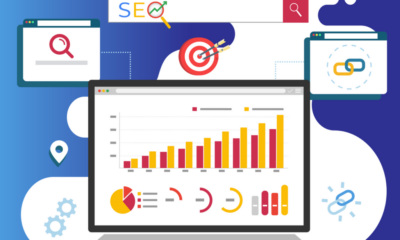MARKETING
4 key building blocks to success

Tech has turned marketing from a bit of a dark art to a tool for strategic business growth, but not without repercussions. Even more, consumers expect brands to not only remember — but to predict — their preferences, interests, likes and dislikes.
The omnichannel struggle is very painful to orchestrate and manage. Companies need a unified and seamless approach that eliminates siloed user experiences, making things more efficient internally and effective externally.
Marketing professionals now wear many hats. We need to be part marketer, part operations officer, part technologist, part data analyst, part revenue officer, part experience officer, consensus builder, diplomat, etc. We have to do more with less, as Gartner’s 2022 CMO Spend Survey found.
While marketing’s budget is rising (with over half of it going to digital channels), that same study reports that 61% lack the in-house capabilities to deliver their strategy. Part of that is because of the tech budget, or rather its constraints. A lack of resources — human, financial and time — poses challenges.
But managing all the cross-channel, interconnected moving parts can be overwhelming, particularly when working on many channels and trying to analyze all those disparate technologies.
How do you orchestrate ecommerce, campaign management, digital asset management (DAM), customer relationship management (CRM), customer data platforms (CDP) and personalization tools?
This is where a unified system — a digital experience platform (DXP) — can help make your marketing ops more efficient and effective. It does so much for you, not only saving you time and money but optimizing your marketing operations in the process.
What is a DXP?
Today’s customers expect seamless experiences as the baseline — so a DXP might sound very appealing. In a nutshell, a DXP promises an integrated way to manage all your tools and technologies in one place, from rich content to customer relationships to marketing automation and even internal workflows.
With so many tools, metrics and systems to keep track of to successfully deliver great customer experiences, a system that brings everything together might sound too good to be true.
But if you are ready and set up to use a DXP properly, it can be an incredibly powerful tool for:
- Updating content across all your channels and platforms.
- Carrying and inputting CRM data across multiple touchpoints.
- Helping you deliver consistent, personalized experiences to customers and internal stakeholders.
DXPs promise holistic, cross-platform seamlessness — but you must be prepared
While the promise of an integrated way to manage all your tools and technologies in one place is appealing, you need to be prepared. Ask yourself, is your company ready for this dynamic shift and prepared to invest long-term?
Many companies work very hard to prioritize customers getting that seamless experience. Yet, internally, they’re in a state of chaos because they don’t prioritize seamlessness holistically. It is critical to craft integrated and consistent solutions that are modular but connect the dots (and fill the gaps) of the digital experience.
This requires a shift in mindset. The organization must embrace a holistic, integrated approach and strong scenario planning to better predict what your business and stakeholders may need.
Dig deeper: Reinventing the digital experience platform
The 4 key building blocks to success
Being prepared can mean many things, but in my experience, it comes down to four things.

1. Internal and external alignment
A DXP functions best when there are clear priorities, tasks and functions across the company. You need all stakeholders to align on:
- What you’re doing.
- Who it’s for.
- Why you’re doing it.
- How you’ll do it (internal audit).
- Before building out your DXP apps and toolset, evaluate exactly what you have now. Then map out which ones you are already using, the functionality within them and what you are currently using them for.
- When you’ll do it.
- What success will look like.
- Roles and responsibilities.
Remember that buy-in and alignment require a data-backed strategy.
2. User-centered thinking
Always ask, “How do we meet our audience where they are in a way that’s relevant and easy for them to understand?” This comes down to empathy for:
- Your audience, employees, partners, stakeholders, etc.
- Their needs, pains and concerns.
Meet them where they’re at in their journey and deliver the right content to the right person at the right time, in the right place.
DXPs are massive, complex systems. It’s easy to get lost in the mechanics of integration and automation. With every new piece of functionality, you must remember the people you’re trying to serve and what their needs are.
Don’t let the system bog you down or make you lose sight of that. It’s about every stage of the interaction. The best user experience is one you don’t even know you’re having.
3. A consistent brand experience
If you’ve achieved alignment and created the map for the DXP, unifying your brand experience across all touchpoints will be a logical next step. Brand consistency is crucial as it can increase revenue considerably.
Why bother?
- Build loyalty and recognition.
- Branding will increase client trust in you.
Your brand is your business’s most valuable asset, but it’s an asset you never wholly own. Your customers also play a part in the opinions they form of you. A consistent experience is more than look, feel, voice and tone.
Externally, it’s about making sure that across touchpoints and platforms, every piece feels like it’s part of the same whole. Internally, it’s enabling your employees with the tools to do their jobs more effectively.
Let’s say a customer buys something in-store, signs up for an email list, gets an email, clicks through it, lands on a blog article and ends up on a product page where they’re pushed to your Instagram account. All throughout, the visuals and language need to be consistent. You need clear rules to make it easy for your team to uphold these standards.
Still, the key to a consistent brand experience for all your stakeholders stems from that alignment and user-centered thinking. It’s about being true to those goals through everything you do, how it gets expressed and how it’s implemented.
4. Creating a culture of feedback
DXP integration can make it easy to build opportunities for feedback into your processes across the board. However, designing a feedback culture isn’t something that just happens — it’s intentional. Build clear feedback processes to improve operations and performance.
No doubt, over time and probably right away, too. You’ll learn how to make significant improvements. Encourage your internal stakeholders to provide feedback on how these initiatives and tools are helping them in their day-to-day, but also what could be improved. Remember, it’s not enough to simply collect feedback. Action needs to be taken based on employee input.
Is it time to invest in a DXP?
Suppose you’re only investing in creating a seamless experience for your customers, while internally, you’re running around like chickens without heads. In that case, you’re doing yourself, your partners and employees and even your customers a disservice.
Eventually, something will fall through the cracks. You and your people are also today’s customers (for other companies), and you likely value seamlessness.
Are you experiencing any of the following?
- Siloed data across multiple platforms prevents you from really understanding what your customers are doing.
- The customer experience across your digital and physical channels is not personalized and disjointed.
- Decisions made are not data-driven and are based on guesswork.
- The cost of the tech stack needed to be efficient and effective is hard to justify.
- The cost of new customer acquisition is too high and you want to focus on retention and growing share of wallet.
If you’re hearing these points and nodding your head, your company is probably ready to invest in a DXP. Good luck!
Dig deeper: Does your marketing team need a digital experience platform (DXP)?
Get MarTech! Daily. Free. In your inbox.
Opinions expressed in this article are those of the guest author and not necessarily MarTech. Staff authors are listed here.




















You must be logged in to post a comment Login